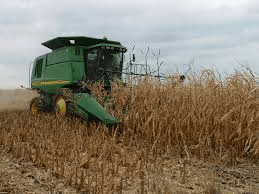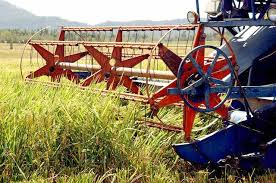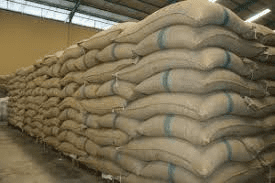Crop harvesting and storage are critical stages in agriculture that directly affect the quality and quantity of produce. Harvesting refers to the process of gathering mature crops from the fields, while storage involves keeping these crops in optimal conditions to maintain their quality until they reach consumers.
Proper harvesting and storage techniques are essential for maximizing yields and minimizing losses. This article will cover the importance of timely harvesting, various harvesting techniques, the tools and equipment used, and best practices for harvesting different crops.
Importance of Timely Harvesting
Timely harvesting is crucial for several reasons:
Maximizes Yield
1. Optimal Ripeness: Harvesting crops at the right time ensures they are at peak ripeness, maximizing their yield and quality.
2. Minimizes Losses: Waiting too long can result in overripe or rotting produce, leading to significant losses.
Quality Preservation
1. Flavor and Nutrition: Crops harvested at the right time have better flavor and nutritional content, which is important for consumer satisfaction.
2. Market Value: High-quality produce fetches better prices in the market, benefiting the farmer economically.
Reduces Pest and Disease Risk
1. Pest Infestation: Leaving crops in the field too long can attract pests, which may damage the harvest.
2. Disease Spread: Overripe crops can be more susceptible to diseases, leading to further losses.
Improved Storage Life
1. Post-Harvest Quality: Timely harvesting helps in maintaining the quality of crops during storage, reducing spoilage rates.
2. Extended Shelf Life: Properly timed harvests can enhance the shelf life of certain crops, allowing them to be stored longer without losing quality.
Harvesting Techniques

There are various harvesting techniques used depending on the type of crop, the scale of farming, and available resources. Here are some common methods:
Manual Harvesting
1. Definition: This traditional method involves handpicking crops. It is often used for delicate fruits and vegetables.
2. Implementation: Farmers carefully inspect plants and harvest crops by hand, ensuring minimal damage.
Mechanical Harvesting
1. Definition: This method employs machines to gather crops quickly and efficiently. It is commonly used for large-scale operations.
2. Implementation: Combine harvesters, for instance, cut and collect grains in one operation, significantly speeding up the process.
Cutting and Threshing
1. Cutting: This involves using sickles or knives to cut crops like wheat or rice at the base.
2. Threshing: After cutting, threshing separates the grain from the chaff. This can be done manually or with machines.
Raking and Gathering
1. Raking: This technique involves using a rake to gather loose crops like hay into piles.
2. Gathering: Once raked, the piles can be collected and stored or transported.
Specialized Techniques
1. Digger for Root Crops: For crops like potatoes or carrots, specialized diggers are used to uproot them without damaging them.
2. Mowing for Forage Crops: Mowers are employed to cut forage crops, preparing them for drying and storage.
Read Also: Sheep gene insights could help farmers breed healthier animals
Tools and Equipment for Harvesting

The right tools and equipment are essential for effective harvesting. Here’s a list of common tools and equipment used in harvesting:
Hand Tools
1. Sickle: A curved blade used for cutting grass or grain crops manually. It is effective for small-scale harvesting.
2. Scythe: Similar to a sickle but larger, it is used for cutting grass and grain over larger areas.
Mechanical Equipment
1. Combine Harvester: A versatile machine that can cut, thresh, and clean grain crops in one operation, making it ideal for large fields.
2. Tractor with Attachments: Tractors can be fitted with various attachments for different harvesting tasks, increasing efficiency.
Specialized Harvesting Tools
1. Potato Digger: A machine designed to harvest root crops like potatoes without damaging them.
2. Fruit Pickers: Long-handled tools that allow workers to reach and pick fruits from tall trees without climbing.
Safety Gear
1. Gloves: Protect hands from sharp tools and rough materials during harvesting.
2. Protective Eyewear: Safeguards against flying debris or accidents while using machinery.
Best Practices for Harvesting Different Crops
Each crop type requires specific harvesting practices to ensure quality and efficiency. Here are best practices for several common crops:
Grains (Wheat, Rice, Corn)
1. Timing: Harvest when the grains are fully matured, indicated by golden color and low moisture content.
2. Method: Use a combine harvester for large fields or manual sickles for small plots.
3. Storage: Allow grains to dry further before storing to prevent mold.
Fruits (Apples, Tomatoes, Berries)
1. Timing: Harvest when fruits are fully colored and firm. Taste testing can help determine ripeness.
2. Method: Handpicking is best for delicate fruits to avoid bruising. Use fruit pickers for high trees.
3. Storage: Store in cool, dry places to prolong freshness.
Vegetables (Carrots, Lettuce, Peppers)
1. Timing: Harvest at the peak size and quality; for leafy greens, avoid harvesting during hot weather to prevent wilting.
2. Method: Pull root vegetables by hand or use a fork to loosen the soil first. Cut leafy vegetables with a sharp knife.
3. Storage: Clean and dry vegetables before storing in cool, dark areas to prevent decay.
Tubers (Potatoes, Sweet Potatoes)
1. Timing: Harvest when the foliage begins to yellow and die back, indicating maturity.
2. Method: Use a potato digger or a fork to gently lift the tubers from the soil.
3. Storage: Cure tubers in a dark, ventilated area for a couple of weeks to improve shelf life.
Forage Crops (Hay, Silage)
1. Timing: Harvest when the crops are at their nutritional peak, usually just before flowering for hay.
2. Method: Use a mower for cutting, followed by raking to gather the cut forage.
3. Storage: Ensure proper drying for hay before baling, and store silage in airtight conditions to prevent spoilage.
Post-Harvest Handling
Post-harvest handling refers to the processes involved in managing crops after they have been harvested but before they reach the market or consumer. This stage is crucial for maintaining the quality and safety of the produce. Proper post-harvest handling can reduce losses, preserve quality, and enhance marketability.
Importance of Post-Harvest Handling
Quality Preservation
1. Minimizing Damage: Careful handling prevents bruising and damage to crops, which can lead to spoilage.
2. Maintaining Freshness: Effective post-harvest techniques help retain the freshness and nutritional value of the produce.
Reducing Waste
1. Loss Prevention: Proper methods can significantly reduce the quantity of produce that spoils before it reaches consumers.
2. Economic Benefits: Reducing waste leads to higher profits for farmers and suppliers.
Enhancing Market Value
1. Presentation: Well-handled crops look more appealing, which can fetch higher prices in the market.
2. Consumer Trust: High-quality, well-preserved produce builds consumer trust and loyalty.
Crop Storage Methods
Choosing the right storage method is essential for maintaining the quality of harvested crops. Here are several effective storage methods:
Controlled Atmosphere Storage
1. Definition: This method involves regulating the levels of oxygen, carbon dioxide, and humidity in storage facilities to prolong shelf life.
2. Implementation: Use airtight containers or rooms with specialized equipment to monitor and adjust atmospheric conditions.
Refrigerated Storage
1. Definition: Storing crops in a refrigerated environment slows down the metabolic processes of fruits and vegetables.
2. Implementation: Maintain temperatures between 32°F and 41°F (0°C and 5°C) to keep produce fresh. This method is ideal for perishable items.
Dry Storage
1. Definition: This method is used for grains, beans, and other dry commodities that require low humidity.
2. Implementation: Store crops in a cool, dry, and dark environment to prevent moisture buildup and spoilage.
Bins and Silos
1. Definition: Large containers designed for storing bulk grains and seeds.
2. Implementation: Ensure proper ventilation and pest control measures to maintain grain quality during storage.
Cold Chain Logistics
1. Definition: A series of temperature-controlled supply chain processes that preserve and maintain the quality of perishable products.
2. Implementation: Use refrigerated trucks and containers during transport to ensure continuous cold storage from farm to market.
Read Also: 17 Medicinal Health Benefits Of Mucuna pruriens (Monkey Tamarind)
Factors Affecting Crop Storage

Several factors influence the success of crop storage, including:
Temperature
1. Impact on Quality: Higher temperatures can accelerate spoilage and lead to loss of freshness.
2. Control Measures: Maintain optimal storage temperatures based on the specific crop requirements.
Humidity
1. Moisture Control: High humidity levels can lead to mold growth and decay, while too low humidity can cause crops to dry out.
2. Monitoring: Use hygrometers to measure humidity levels and adjust as necessary.
Ventilation
1. Airflow Importance: Proper ventilation helps reduce humidity and temperature, preventing spoilage and pests.
2. Implementation: Ensure adequate airflow in storage facilities through fans and vents.
Light Exposure
1. Effects of Light: Exposure to light can trigger ripening processes and lead to spoilage in some crops.
2. Storage Practices: Use opaque containers or store crops in dark areas to minimize light exposure.
Pest and Disease Management
1. Risks: Pests and diseases can lead to significant losses during storage.
2. Prevention: Implement pest control measures, including regular inspections and traps, to manage infestations.
Common Storage Challenges and Solutions
Storage can present several challenges, but understanding them can help farmers and producers find effective solutions.
Challenge: Spoilage and Decay
1. Causes: High moisture, inadequate ventilation, and poor temperature control can lead to spoilage.
2. Solution: Use appropriate storage methods like refrigeration for perishable items and maintain optimal humidity levels.
Challenge: Pest Infestations
1. Risks: Pests can quickly damage stored crops, leading to significant losses.
2. Solution: Implement pest management strategies such as regular inspections, traps, and using sealed containers to prevent access.
Challenge: Nutrient Loss
1. Causes: Poor storage conditions can lead to the loss of nutrients over time.
2. Solution: Monitor storage conditions closely and use methods like controlled atmosphere storage to preserve nutritional quality.
Challenge: Overcrowding
1. Risks: Overloading storage facilities can restrict airflow, leading to spoilage and pest issues.
2. Solution: Follow recommended storage guidelines regarding capacity, allowing adequate space for ventilation.
Challenge: Inconsistent Quality
1. Causes: Variability in handling and storage practices can lead to inconsistent quality of stored crops.
2. Solution: Standardize handling and storage procedures across operations to ensure uniform quality.
By understanding these practices and challenges, farmers can effectively handle and store their crops, reducing losses and improving their profitability.
Read Also: 4 Steps to help an Orange Tree Produce Sweet Oranges
